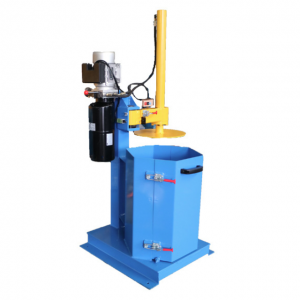In the maritime sector, waste management is a crucial element for ensuring cleanliness and adhering to environmental regulations. A highly effective solution to this issue is the marine garbage compactor. This advanced equipment is essential for compressing various waste types, facilitating easier handling and disposal. In this article, we will examine the features, advantages, and operational guidelines of marine garbage compactors, with a particular emphasis on their effectiveness in compressing unbound waste paper, cardboard boxes, plastic packaging bags, and everyday household waste that does not contain hard objects.
What is a Marine Garbage Compactor?
A marine garbage compactor is a portable machine specifically engineered for marine settings. It effectively compacts refuse into small, manageable packages, significantly decreasing the volume of waste that must be disposed of at sea. This not only aids in maintaining a clean and organized environment on board but also plays a vital role in environmental protection by reducing the quantity of waste released into the ocean.
Key Features
No Need for Bundling:
A prominent feature of marine garbage compactors is their capability to compress unbound waste without requiring bundling. This is especially beneficial for busy marine operations where time and efficiency are paramount. Users can effortlessly load the waste into the machine without the additional step of tying and securing bundles, thus optimizing waste management procedures.
Simple Operation:
The operation of marine garbage compactors is designed to be intuitive. With easy-to-use controls, crew members can quickly acquire the skills needed to operate the machine, making it accessible even to those without specialized training. The typical process involves opening the positioning pin, inserting the waste, and activating the motor. Clear safety measures ensure that the operation remains both safe and efficient.
Universal Casters for Mobility:
The design of marine garbage compactors incorporates universal casters, which facilitate easy movement across various areas of the vessel. This mobility is crucial in a marine setting where space may be restricted and the necessity to relocate equipment frequently arises. The capability to transport the compactor to different waste collection points improves operational efficiency.
Low Operating Sound:
Another notable benefit of marine garbage compactors is their low operating sound. This characteristic is especially significant in office areas or living quarters on ships, where it is essential to maintain minimal noise levels. The quiet functioning of these machines guarantees that waste management does not interfere with the daily routines of crew members or passengers.
Suitable Waste Types
Marine garbage compactors are specifically engineered to manage a variety of waste types, including:
Unbound Waste Paper:
This refers to paper waste that is not tied or bundled. The compactor can effectively process loose paper, significantly reducing its volume.
Paper Boxes:
Cardboard boxes are prevalent in marine operations, particularly for packaging food and supplies. The compactor can crush these boxes into compact bales, simplifying their storage until disposal.
Plastic Packaging Bags:
With the rise in plastic usage, the management of plastic waste has become vital. Marine garbage compactors can efficiently compress plastic bags, aiding in volume reduction and facilitating easier disposal.
Daily Household Waste:
The machine is adept at compressing general household waste that does not include hard objects. This encompasses food scraps, non-recyclable materials, and other organic waste, ensuring that waste management on board is both effective and environmentally sustainable.
Operational Guidelines
Utilizing a marine garbage compactor entails several steps to guarantee safety and efficiency:
Preparation:
Ensure that the vicinity surrounding the compactor is free from obstructions and that all safety measures are implemented. Acquaint yourself with the machine’s controls and safety protocols.
Loading Waste:
Release the positioning pin and rotate the beam. Position the garbage bag over the feed box and insert the waste. It is imperative not to exceed the feed box’s capacity, following the manufacturer’s specifications.
Starting the Machine:
After loading the waste, activate the motor and pull the control valve. Maintain a safe distance from the machine during operation to prevent injuries from moving components.
Compression Process:
The hydraulic pump unit produces significant compaction forces, compressing the waste into compact bundles. The compression duration is generally around 25 seconds, succeeded by a return stroke.
Maintenance and Safety Checks:
Routine maintenance of the compactor is vital for optimal functionality. Verify hydraulic fluid levels, examine for any signs of wear and tear, and confirm that all safety mechanisms are operating correctly.
Environmental Impact
The implementation of marine garbage compactors extends beyond simple convenience; it carries substantial environmental consequences. By effectively decreasing waste volume, these devices assist in reducing the ecological footprint associated with maritime activities. They guarantee that a smaller amount of waste is disposed of at sea, which is essential for safeguarding marine ecosystems and complying with international waste disposal regulations.
Conclusion
Marine garbage compactors signify a crucial development in waste management solutions for the maritime sector. Their capability to compress various waste types—without requiring bundling—along with their user-friendly operation, mobility, and low noise levels, renders them an indispensable asset on board. By investing in a marine garbage compactor, maritime operators can improve their waste management practices, support environmental sustainability, and foster a cleaner, more efficient working environment.
For further information or to inquire about the purchase of a marine garbage compactor, please reach out to ChutuoMarine at marketing@chutuomarine.com. Adopt efficient waste management with the appropriate equipment and contribute to a cleaner marine environment.
Post time: Aug-19-2025







